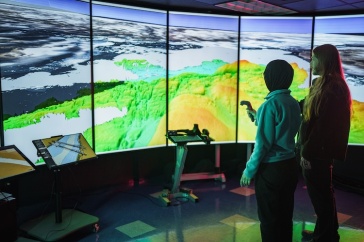
Carsey School of Public Policy
University of New Hampshire
(603) 862-4650; carsey.communications@unh.edu
@carseyschool
Dec. 18, 2017
DURHAM, N.H. – As the Census Bureau prepares for the upcoming 2020 Census, some populations in rural America will be difficult to count accurately, including residents of deep Appalachia, blacks in the rural South, Hispanics in the rural Southwest, as well as migrant and seasonal farmworkers. New research from the Carsey School of Public Policy at the University of New Hampshire outlines the specific challenges in identifying and counting these hard-to-count (HTC) populations.
Author William P. O’Hare estimates there are 251 rural counties and 65 urban counties that should be considered HTC in 2020. Hard-to-count populations are identified as those counties with a mail return rate in the most recent Census (2010) of 72.7% or less. A significant share of the current HTC counties are ones where blacks, Hispanics, or American Indians or Alaskan Natives are more than 50 percent of the population, making these populations more likely to be undercounted in the Census.
Because Census data are used in political, business, and social welfare arenas, the accuracy of the count is critical. Census-derived data are used to distribute more than $6 billion a year which amounts to more than $6 trillion dollars over the ten-year period of the Census cycle. Major programs that use Census data to distribute funds include Medicaid, the Supplemental Nutrition Assistance Program (SNAP), Medicare Part B, Headstart, and highway planning and construction.
“With undercounted communities receiving less than their fair share of public funds, there will be undue economic pressure in rural communities, many of which are already struggling,” notes O’Hare. “Special outreach will be needed to ensure a complete and accurate count in many rural parts of the nation.”
"The census count is particularly important for children, because half of the 16 largest programs that use Census data to distribute federal funds focus on children and young children had a higher net undercount than any other age group in the 2010 Census," said O’Hare.
Based on current Census plans about 80 percent of the country will receive communications that urge a response via the internet. The other 20 percent, mostly rural areas, will be given a choice of responding by internet or a paper questionnaire. The heavy reliance on the internet is important because 21 percent of rural households do not currently have internet access at home (compared to 13 percent urban), leaving rural residents at risk of being undercounted.
The author argues that with the upcoming Census a little more than two years away, careful planning and adequate budgeting are needed to ensure an accurate and compete count of the country’s population.
The report can be found here: https://carsey.unh.edu/publication/2020-census
The Carsey School of Public Policy at the University of New Hampshire conducts research, leadership development, and engaged scholarship relevant to public policy. It addresses pressing challenges, striving for innovative, responsive, and equitable solutions at all levels of government and in the for-profit and non-profit sectors.
















































